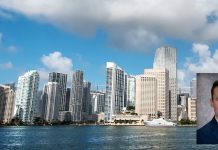Coral Gables is one of 35 Champion Cities selected as finalists in the 2018 U.S. Mayors Challenge, a nationwide competition that encourages city leaders to uncover bold, inventive ideas that confront the toughest problems cities face.
These 35 urban innovations rose to the top of a competitive pool of more than 320 applications. The Champion Cities now will begin a six-month testing phase where they will conduct public prototypes of their ideas with grant funding of up to $100,000 per city, a new addition to the competition this year.
The Mayors Challenge returns to the U.S. as the first investment in the American Cities Initiative, a $200 million suite of new and expanded programs that will empower cities to generate innovation and advance policy that moves the nation forward.
Coral Gables now advances to the six-month “Test, Learn, and Adapt” phase of the competition. Cities will refine their ideas during this process with up to $100,000, as well as personalized support from innovation experts, to test and begin building support for their urban innovations and submit a new application in August. In October, four cities will receive $1 million awards and one will receive a grand prize of $5 million to bring their ideas to life.
“We received hundreds of bold and creative ideas from cities around the country in response to the 2018 Mayors Challenge, and these 35 really stood out for their potential to improve people’s lives,” said Michael R. Bloomberg, founder of Bloomberg Philanthropies and three-term mayor of New York City. “The next six months are a great opportunity for the cities to test their ideas and make them even more innovative and effective.”
The 35 Champion Cities performed the best against four key criteria — vision, potential for impact, implementation plan, and potential to spread to other cities. A prestigious selection committee co-chaired by former Ambassador Caroline Kennedy and former Xerox chair and CEO Ursula Burns, and comprising distinguished policy experts, artists, academics, business executives and social innovation leaders assessed the applications.
In early 2017, Coral Gables Commissioner Vince Lago brought this competition to the forefront and challenged the city to participate in the Bloomberg Philanthropies’ Mayors Challenge. Commissioner Lago designated City Commission liaison Chelsea Granell as team lead on the project. Together city staff such as the IT director Raimundo Rodulfo and Senior Sustainability Analyst Matthew Anderson worked diligently to identify a problem.
“The process began with crowdsourcing. We launched an innovation campaign where all members of the community were encouraged to participate and submit an idea,” Granell said. “Although we received many great ideas, we did not find one which promised to address an existing problem for our city. Believe it or not, our idea was born out of a disaster.”
After Hurricane Irma, the city lost power for days and many residents found themselves relying on a sole energy provider for power recovery. Our critical infrastructure remained vulnerable because it had to run on power derived from a generator for a short period of time. For many cities it becomes challenging to effectively provide emergency response services because services can potentially become impacted when natural disasters occur.
The City of Coral Gables is committed to make its existing critical infrastructure more resilient by integrating smart solar-powered micro-grids that can prioritize power distribution during emergencies, to ensure that operations such as public safety services continue. After several discussions, the city partnered with the University of Miami to breathe life into an idea that would make Coral Gables more resilient.
Dr. Nurcin Celik, UM Associate Professor, Department of Industrial Engineering, and director, Simulation and Optimization Research Laboratory (SimLab) at the College of Engineering, developed a smart energy management system and will be working with the city to “test, learn and adapt” micro-grids.
Essentially, there are two components to this idea’s function. One component is the hardware, and the other is the software, which is where the intelligence for this concept derives. Energy will be retrieved from the sun by way of solar panels. Once the energy is collected, it is stored in a battery or storage system at which point, when power is lost, it could serve as its own power source.
This smart system is not limited to use during storms or when power is lost, but is beneficial because it could be used daily and year-round as an energy conservation system. In daily use, the system will recirculate power in areas that power is not being used, for example empty rooms through use of sensors that will be installed; this function will need to be programmed into the software component.
Therefore, the city would not have to rely on an energy provider when energy is lost and can become self-reliant in times of crisis.
“When people are challenged, great ideas begin to surface,” Commissioner Lago said. “I knew that bringing this challenge to our city would bring our community together. We are excited to have the opportunity to see our idea come to life and potentially impact communities on a global scale because public safety is a high priority and transferable everywhere.”
For more information, visit www.bloomberg.org.






